Monday was spent with a friend at Sutton Hoo, an Anglo-Saxon burial site near Woodbridge in Suffolk. This was discovered in the 1930s to be a very important Anglo-Saxon burial ground when the then owner, Mrs Edith Pretty asked an archaeologist to excavate the "mounds" on her property. It has now been decided by the "experts" that the main burial mound is that of King Raedwald, a very important Anglo-Saxon king who died around 625AD. The majority of the artefacts found at the site are in the British Museum, Mrs Pretty donated them to the museum. So Sutton Hoo itself has mostly replicas on display. At first this seems a pity, one feels the real ones should be at Sutton Hoo, which since the 1990s has been owned by the National Trust, but on reflection you realise that they are safe for all posterity at the British Museum. (After all we know the British Museum doesn't part with anything once it gets its hands on it!)
There is not really much to see now, especially of King Raedwald's tomb, but apparently it was extremely important as he was buried in a ship, which was estimated to be about 80 m long
. The positions of the prow and stern have been identified, but this and all the other burial mounds were plundered at some time in the past, including Tudor times. They missed all the gold artefacts in King Raedwald's tomb and these are now in the British Museum.
There were apparently two ship burials, in itself unusual.
My friend and I took a guided tour of the site which allowed us to actually walk on the mounds, which you cannot do if you just walk around. We had a very informative guide who was also an archaeologist and had worked on the site when further excavations were done in the 1990s. I learned something I didn't realise, that Suffolk is mostly very acidic sand, so that anything, ships timbers or bodies and bones, all rapidly disappear, so that when a burial mound is excavated there is nothing there except a formation in the sand called a "sand body". This however, is enough to determine the gender and approximate age of the person (or horse) buried there. Horses apparently have much denser bones than humans so their bones take longer to disappear than human ones. We saw the site of a double burial, quite unusual, of a young warrior and his horse.
I have included a few photos, but they don't really tell you much as there s really only grassy mounds or burial sites marked with stones, to see now.
Following in the footsteps of King Raedwald
Monday, June 15, 2015
 Ipswich, England, United Kingdom
Ipswich, England, United Kingdom
Other Entries
-
1Coventry's two cathedrals
May 2917 days prior Coventry, United Kingdomphoto_camera4videocam 0comment 6
Coventry, United Kingdomphoto_camera4videocam 0comment 6 -
2Playing tourist
May 3016 days prior London, United Kingdomphoto_camera3videocam 0comment 4
London, United Kingdomphoto_camera3videocam 0comment 4 -
3A whistle-stop day tour to Paris
Jun 0213 days prior Paris, Francephoto_camera4videocam 0comment 4
Paris, Francephoto_camera4videocam 0comment 4 -
4Following in the footsteps of Henry VIII
Jun 0411 days prior London, United Kingdomphoto_camera4videocam 0comment 4
London, United Kingdomphoto_camera4videocam 0comment 4 -
5The Imitation Game
Jun 069 days prior Bletchley Park, United Kingdomphoto_camera3videocam 0comment 3
Bletchley Park, United Kingdomphoto_camera3videocam 0comment 3 -
6Walking round London
Jun 096 days prior London, United Kingdomphoto_camera9videocam 0comment 0
London, United Kingdomphoto_camera9videocam 0comment 0 -
7More stately homes
Jun 114 days prior London, United Kingdomphoto_camera8videocam 0comment 1
London, United Kingdomphoto_camera8videocam 0comment 1 -
8Following in the footsteps of King Raedwald
Jun 15 Ipswich, United Kingdomphoto_camera6videocam 0comment 2
Ipswich, United Kingdomphoto_camera6videocam 0comment 2 -
9A flying display - birds, not aeroplanes!
Jun 172 days later Stonham Aspal, United Kingdomphoto_camera7videocam 0comment 4
Stonham Aspal, United Kingdomphoto_camera7videocam 0comment 4 -
10After communism
Jun 216 days later Prague, Czech Republicphoto_camera21videocam 0comment 5
Prague, Czech Republicphoto_camera21videocam 0comment 5 -
11In the footsteps of the masters
Jun 249 days later Vienna, Austriaphoto_camera15videocam 0comment 2
Vienna, Austriaphoto_camera15videocam 0comment 2 -
12Recovering from Stalin
Jun 2712 days later Budapest, Hungaryphoto_camera12videocam 0comment 2
Budapest, Hungaryphoto_camera12videocam 0comment 2 -
13Revisiting the Channel Islands - Guernsey
Jun 2914 days later St. Peter Port, Internationalphoto_camera10videocam 0comment 5
St. Peter Port, Internationalphoto_camera10videocam 0comment 5 -
14From the "big" Island - Jersey
Jul 0419 days later St. Helier, United Kingdomphoto_camera14videocam 0comment 1
St. Helier, United Kingdomphoto_camera14videocam 0comment 1 -
15A VERY big boat
Jul 2540 days later Bruges, Belgiumphoto_camera34videocam 0comment 7
Bruges, Belgiumphoto_camera34videocam 0comment 7 -
16More big boats - old ones this time
Jul 3045 days later Portsmouth, United Kingdomphoto_camera10videocam 0comment 4
Portsmouth, United Kingdomphoto_camera10videocam 0comment 4
Comments
2025-05-23
Comment code: Ask author if the code is blank

 Ipswich, England, United Kingdom
Ipswich, England, United Kingdom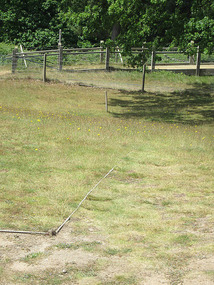







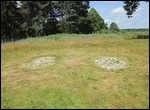
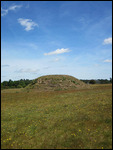
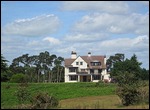
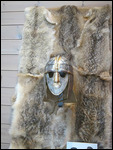
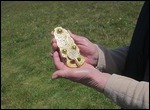
diannevdp
2015-06-18
Fascinating Liz! I love this sort of thing.
Margaret McLoughlin
2015-06-26
I'm a little behind with your blog! Your comment about artifacts being moved to the Museum and replaced with replicas at the site, reminded me of Greece. They are doing that with their major archeological sites. Also, the bit about sand bodies is interesting - I guess it's similar to the body casts at Pompeii?